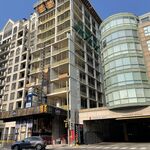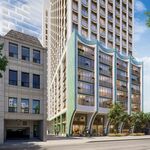1.) Serving YYZ isn't really the be all and end all of transit planning. Most of its employees live in Peel Region, and the only area which has a significant group willing to take public transit to the airport is Downtown. Outside the core, bus service along the highways would be way better (i.e. a bus which goes along the 401, ducking into centers like STC and Sheppard Station on its way to YYZ). Connections to YYZ should be a bonus, not a goal.
You honestly have to think logic here! Do you really think there are more people employed at Pearson than people that go there to work? I highly doubt that.
And you also have to think psychology. I doubt many people would take a bus to the airport, even if it ran on the 401 or in a dedicated ROW. But loads of people would take the subway, probably catching everyone north of St. Clair, maybe even if they have to take the bus to the subway.
2.) Connectivity with Mississauga Transit obviates the need for any kind of Westward subway. If we build a subway to suck up MT passengers, 99% of them will reach it by bus. So, no matter where we put a subway, MT users will have to deal with a Bus/Subway transfer. The comparison would be how much time would be saved by transferring the MT users to a subway near YYZ versus having them use a kind of Richview Transitway to transfer at a station around Jane? My guess is not much, assuming a properly functioning busway, so why bother with extending the subway?
Because it just makes things easier.
Assuming right now that the sole purpose of Eglinton is to serve MT riders, a BRT to a subway at Jane might make sense. But if you actually take into account the N-S bus lines, Pearson Airport and the development that exists and could happen on Eglinton, you might begin to wonder why we'd settle for a funneling BRT. If the idea is to create a network, wouldn't we want a continuous line to the airport, to spread the transfers across a number of stations, continue rapid transit service and create a regional terminal at Pearson rather than at Jane-Eglinton and expect everyone to funnel into that single station?
3.) Eglinton east of Don Mills isn't really lacking in capacity. It's busy, but it's not problematic. The issues with Eglinton are the high congestion west of Don Mills, plus the other high volume buses which use the same stretch of road. If we built some kind of rapid transit at DonMills Eglinton, that would stop buses from being caught in congestion near Mt. Pleasant and Eglinton. Some kind of super-bus service could easily cope with an isolated Don Mills - Kennedy route.
I partially agree, and that's why I'd say after Eglinton stretches Pearson-Don Mills, an in-depth study should be done as to what to do next. Perhaps bus lanes will suffice, perhaps by the time it's done, there will be demand for a subway, or maybe we should just wait to reevaluate it a couple years down the road.
What I do have to say about it is that there's a bunch of demand for a RT route along Eglinton on that short stretch from Kennedy to Kingston Road; tonnes of density, the Lakeshore Go line (also a connection to the Stouffville line,) and the future Kingston Road BRT/LRT. It could also help to spread out traffic on the B-D; Scarborough passengers would have 3 options; North on Sheppard, Midtown on Eglinton and south on the B-D. Sheppard will open up a totally new demographic for ridership, so that won't have any affects on southern ridership at all. In fact it might increase it. So that's putting a lot more pressure on the B-D, and that midtown option might become valuable.
4.) The further east you go, the more you just end up competing with Bloor-Danforth as a crosstown route. It's not worth spending billions to just cannibalize existing subway ridership.
Again, I think the extra option could be very valuable. Also, I question the term "cannibalize existing subway ridership." There's really no such thing. It wouldn't decrease the ridership, that's certain. In the transit world, we instead say "relieve existing subway lines." When you say it like that, it makes it sound like you want the B-D's ridership to be propped up as high as possible, even though the B-D's getting closer and closer to the YUS bursting point, especially on the Danforth segment. An Eglinton line right now might easily take a pretty large amount of riders off the B-D, freeing up space at B-Y, and also improving that "network" thing.




